Osteopathy a Way to Better Health
There are so many factors to ‘being healthy’ that sometimes it can feel overwhelming trying to achieve and maintain great health. This newsletter explores the importance of ‘health’ in its many aspects and we will try to encourage you to follow some guidelines to make this easier.
Kind regards,


So simple, but so true. Without our health and without our loved ones being healthy around us, we are going to struggle. Life never comes into such perspective as when serious illness affects us or our family and friends.
Valuing each second and living life with daily mindfulness is Key to Happiness.
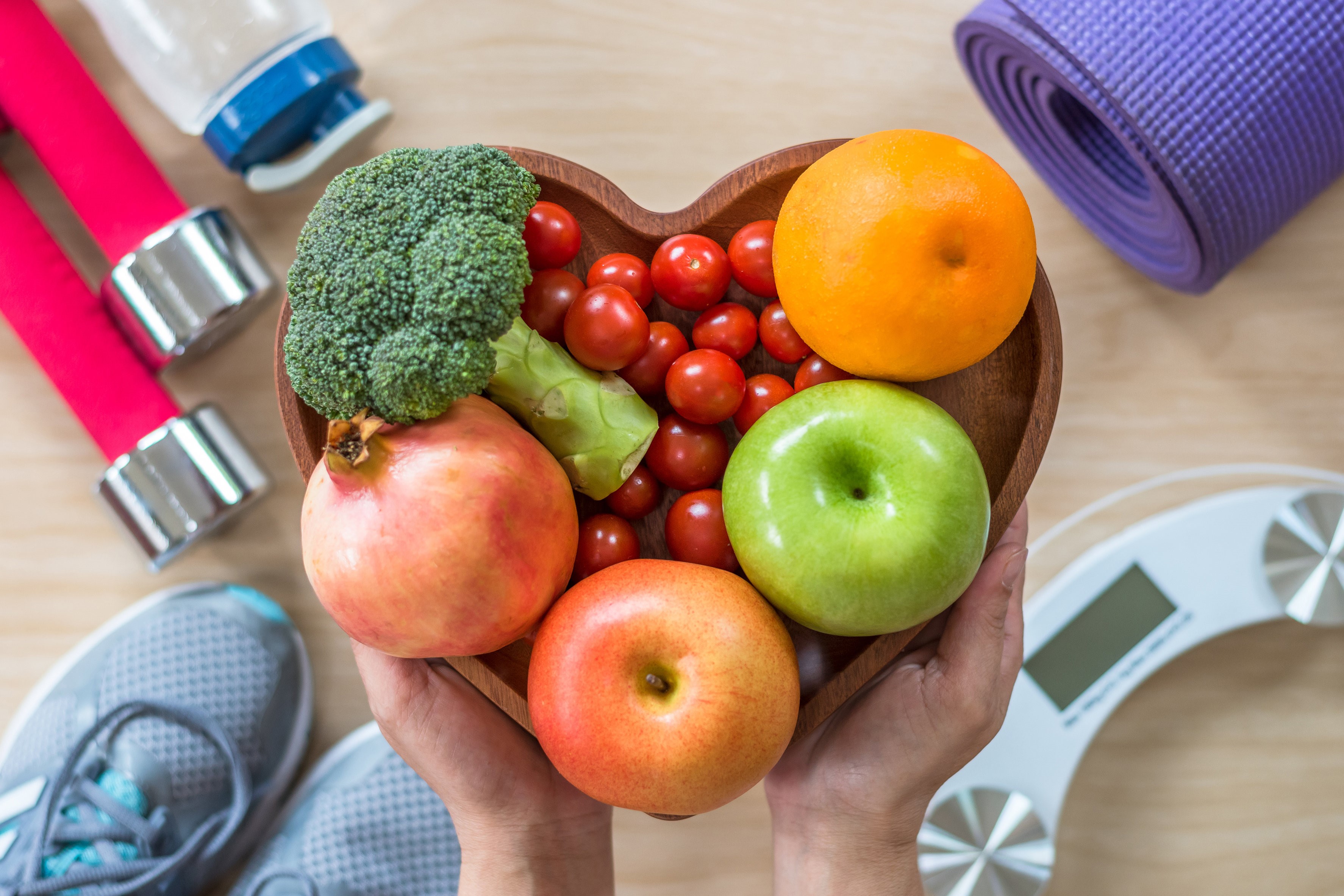
It can be daunting to be ‘healthy’ all the time but if we break it down into individual areas it can make it easier to focus and just a few small changes may improve your life, health and happiness.
Sleep – do you go to bed early enough? Most of us in the UK only average 7 hours of sleep. If you sleep less than this, then you are probably not having enough.
Diet – balance is the key. Reduce refined sugar where possible. Eat regularly to maintain an even blood sugar and keep your body in balance.
Activity – if you have a sedentary job then find ways to be active. Climb stairs, don’t take the lift. If you are not someone who exercises and hates the gym then brisk walking is incredibly good for you. Apps that count your steps can be a great way to give yourself that incentive to be more active.
Relationships – friendship and social interaction is incredibly important for human health. We need the mental stimulus of being part of a social group

We regularly see patients who may themselves be undergoing treatment for serious illness or those patients that are caring for loved ones. In both scenarios it can be exhausting dealing with the issues that chronic illness brings to any family dynamic. In situations like these the mind-body link is very obvious to us as Osteopaths and we will pinpoint the areas that stress and strain are causing muscular and postural tensions. The role of Osteopathy will aim to help achieve better function and give the body the ability to relax on a musculoskeletal level.
If this newsletter has inspired you in some way, please take time to think of friends or family that may be experiencing illness. For many, charitable events can be a wonderful way to say thank you for the caring people that we encounter during these difficult times.
Indeed, our Osteopath Katie has recently experienced the tragic loss of her mother to cancer. She says that the hospice that cared for her mother also went out of their way to care for the family too. With this in mind, Katie is doing Ride London on Sunday 4th August and is raising money for this wonderful hospice, The Hospice of St Francis.
Her Just Giving Page is: https://www.justgiving.com/fundraising/Katie-Clare8
We all send our deepest condolences to Katie and her family.
For Further Information on Osteopathy and how it may help, please call our Osteopaths today. 02089776396

Please do not hesitate to get in touch with us for any reason, we are here to help and welcome any feedback. Click here for more information.
Osteopathy for Headaches
Some people are lucky never to get headaches but for many of us they can be a recurring problem. I have personally suffered headaches since I was a little girl and these ‘tension’ headaches have led into migraines in later life. I find regular Osteopathic treatment helps relieve the neck tension that results from the headaches and the vicious cycle of tension-headache-tension that then ensues.
Kind regards,

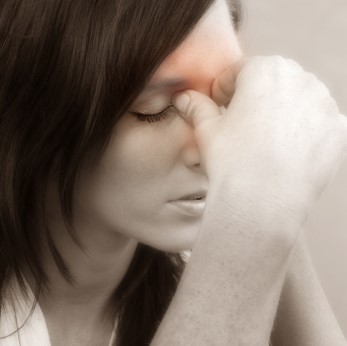
Tension headaches are the most common type of headaches but the cause of them isn’t well understood. As Osteopaths we often observe the cycle of neck/postural tension causing a headache which then in turn causes more tension, which leads to further headaches…
This can be very debilitating to patients, impacting on their lives and causing a lot of distress.
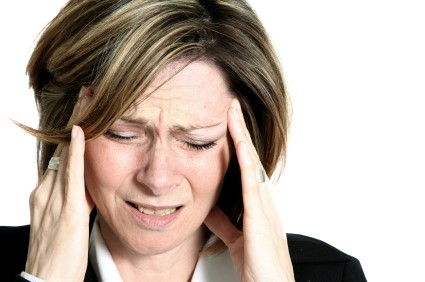
Tension headaches can be a diffuse pain anywhere from the back and top of the head or radiating from the forehead to the sides of the head. They can be infrequent or continuous ranging from 15 minutes to 15 days or more in duration. Unlike migraines, tension headaches aren’t associated with visual disturbances or vomiting but activity may make them worse and there may be sensitivity to light.
In some migraine sufferers, a tension headache may be the trigger that brings on a migraine.
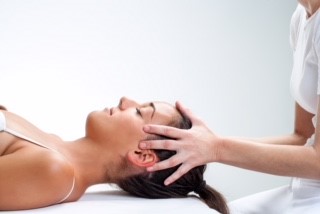
Osteopathy on its own can be beneficial to help ease tension headaches but your Osteopath will also discuss lifestyle factors which may help. As everyone is an individual and tension headaches are always unique to that person, they will discuss all the many factors that may contribute. For example, diet, climate, environmental factors, stress management.
Musculoskeletally, your Osteopath will do their best to improve the function of the spine and muscles to help maximise movement and reduce stress on the neck muscles. In turn, post-headache, they will alleviate the tension in the neck and shoulders caused by the headache itself. Various techniques will be used and each patient will respond uniquely to different treatments to alleviate the headache. Therefore, your Osteopath may need a couple of treatments to work out which ‘pattern’ of treatment is best for you.
For Further Information please call our Osteopaths today and we can help you stay fit and healthy over the Summer. 02089776396

Please do not hesitate to get in touch with us for any reason, we are here to help and welcome any feedback. Click here for more information.
Anyone For Tennis?
With Summer around the corner many of us return to outdoor sports, especially tennis. It is a fantastic sport, encouraging fitness and social interaction.
We want all our patients to enjoy life, exercise and well-being so enjoy this newsletter as it may help you to avoid injury and stay well.
Kind regards,


Tennis can be high impact with bursts of speed & swift direction changes potentially leading to injury.
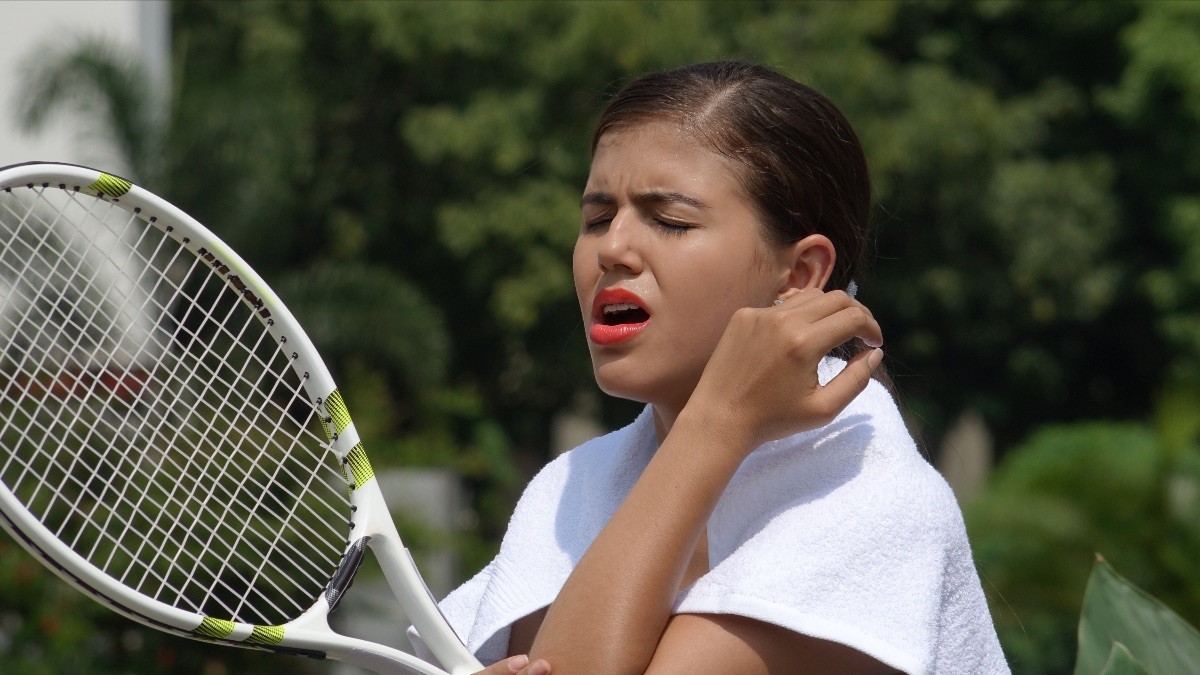
Tennis Elbow – obviously, we had to mention this one first! Ironically, in our Osteopathic practice we see tennis elbow mostly related to repetitive strain injuries of computer work or lifting. However, if your grip on your tennis racket is small and you grip very tightly, tennis elbow is a possibility!
Sprained Ankle – amateurs and professionals alike can easily twist an ankle whilst rapidly zooming around the court. Watch out especially if the court is slippery or if you are getting tired.
Shoulder Injury – this is fairly obvious and is often caused by overstrain of the rotator cuff shoulder muscles. Warming up is key and building stamina to last that extra set is vital.
Achilles Tendon Injury – quick acceleration can cause the calf muscles to contract strongly and there is a chance of overstrain or even rupture to the achilles tendon. Try warming up your muscles with deep heat and after tennis apply magnesium oil to help muscle function.
Back Injury – watch the professionals at Wimbledon this summer and you will see the immense strength and strain caused when serving. Extending the spine and using it to power the serve can easily lock up facet joints in the spine and overstrain the spinal muscles.

At Kingston & Teddington Osteopathy we can help advise and treat your tennis related injury.
All our Osteopaths have done further training in Kinesio-Taping. You may have seen professional tennis players with their pink and blue taping… it is a great way to help you continue to play tennis and avoid further injury.
For Further Information please call our Osteopaths today and we can help you stay fit and healthy over the Summer. 02089776396

Please do not hesitate to get in touch with us for any reason, we are here to help and welcome any feedback. Click here for more information.
Pregnancy and giving birth is the most astounding, fantastic and amazing part of life’s rich cycle. As an Osteopath, having specialised in helping pre and postnatal mothers for the last 20 years, I am still in awe of this wonderful process of giving life to the next generation.
With this in mind, this newsletter is going to focus not on the baby, but on the mother and what their body will go through during this time. Osteopathy can be hugely beneficial in helping mums cope with the physical changes to their own body, both during and after pregnancy.
Kind regards,


The rapid changes in the body that occur during pregnancy can lead to musculoskeletal complications in the lower back, back, wrist and neck areas. In the vast majority of cases this is directly related to pregnancy only and not present before or after.
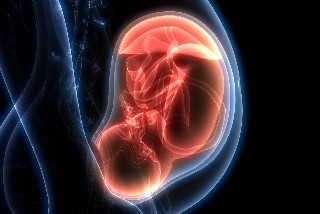
The hormonal, vascular and physiological changes in pregnancy increase the risk of musculoskeletal aches and pains.
Commonly, low back pain, hip and pelvis pain and upper back pain occur throughout the pregnancy but often manifest most in the third trimester.
Osteopathically, we may treat pregnant mums experiencing musculoskeletal-skeletal neck and upper back problems in the first trimester. This can be related to morning sickness and early changes to posture.
At about 20 – 24 weeks gestation we often see the beginnings of lower back, pelvis and mid back pain. This is when the baby gains weight rapidly and marked changes of posture occur in a very short space of time.
In the third trimester low back and pelvis pain is common and occasionally can be very acute. Osteopathic treatment is quite safe during this time.
At Kingston & Teddington Osteopathy all our osteopaths are giving in-house training on how to safely treat pregnant mothers and we have adapted techniques to be as gentle as possible yet achieve a positive outcome.

Post-birth time is all about getting to know this gorgeous little person that has entered your life and it is common for mothers to put themselves last in terms of getting help for any aches and pains.
At Kingston & Teddington Osteopathy our Osteopaths can see mothers very soon after the birth and treatment is adapted so that it is safe. If possible, it is ideal to come along straight away if you are experiencing any back, pelvis or neck pain.
For Further Information there is more literature at: https://pelvicpartnership.org.uk/

Please do not hesitate to get in touch with us for any reason, we are here to help and welcome any feedback. Click here for more information.
In this month’s edition we delve into the very common condition called sciatica. The statistics point to around 40% of the UK having experienced some form of sciatica but the likelihood is that this number is greater with many sufferers not seeking help and treatment.
Kind regards,

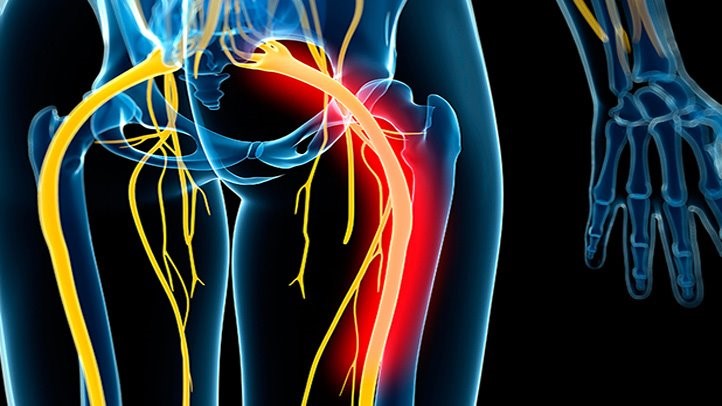
What is sciatica? Typically, it is pain, numbness or pins and needles in the distribution of the sciatic nerve usually affecting one side of the lower back/leg. The sciatic nerve is the longest nerve in the body travelling from your lower back right down to the foot. Pain can range from a dull ache with tingling right up to excruciating nerve pain.
This can mean some or all the following areas might be affected:
• Lower Back
• Buttock Muscle
• Outer Hip
• Back of the Thigh
• Outer back of the Calf
• Sole of the Foot
Sciatica can potentially be very debilitating or episodic with minor symptoms. The most important thing is to quickly determine the cause of the sciatica. This is where your Osteopath with their diagnostic skills can really help.
Your Osteopath will assess you standing, sitting and lying down and may do various tests to help differentially diagnose the source of the pain. The outcome of this will affect the future treatment plan and outlook for recovery.
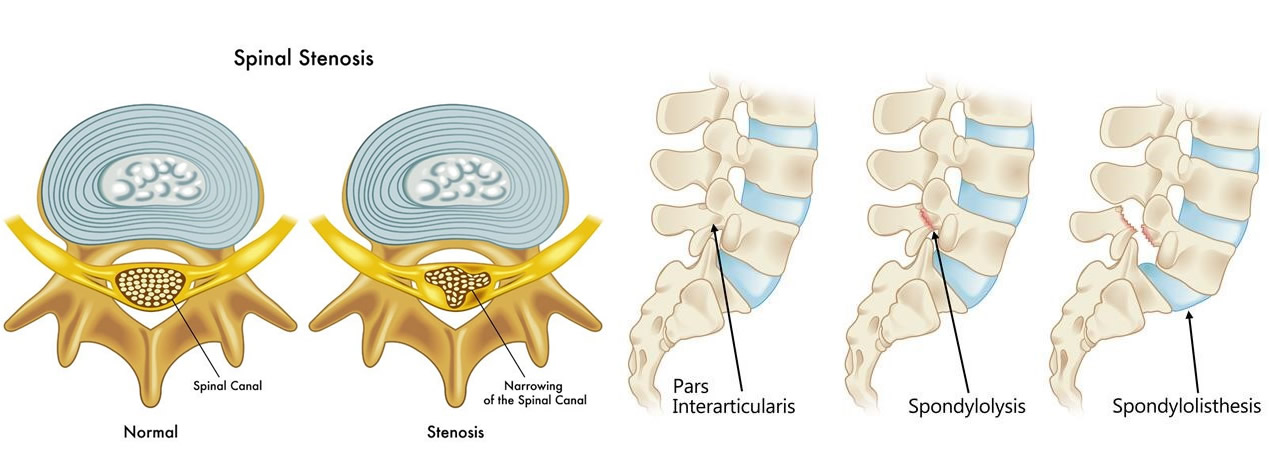
Serious conditions causing sciatica might be narrowing of the spinal canal (stenosis) or spondylolisthesis (forward movement within the vertebral column itself). These are rare to find but if your Osteopath feels there may be a chance of this then they may refer you for an MRI scan. This may not actually change the treatment plan they decide on, but it will alter the advice given on how to manage the problem. Should you ever have sciatica in both legs, with any changes to your bladder or bowel function then you should go directly to A&E as this is not sciatica but potentially a condition called Cauda Equina Syndrome.
However, for most of the population, common causes of sciatica are back muscle spasm, joint inflammation, lumbar disc problems and/or degenerative changes within the spine.
As Osteopaths, we treat this problem frequently and so will be able to tailor the treatment to your body after ascertaining the cause of the sciatica.
With sciatica your Osteopath will physically treat the problem, but rehabilitation is also very key to aid recovery and prevention. At Kingston & Teddington Osteopathy we always give exercises that may be of help and can advise if there needs to be medication or referral for an MRI scan.

Please do not hesitate to get in touch with us for any reason, we are here to help and welcome any feedback. Click here for more information.
“Where did that year go?!” I can hear myself saying all too often this January and I’m sure there are a lot of you that feel the same way. Conversely, you may be saying good riddance to 2018 because it was a little bit tricky. Whatever the circumstances, in this month’s issue I would like to pay close attention to the theme of ‘Life Is For Living’. We are all busy in our own ways but are we busy doing the things that are keeping us healthy and happy?
Kind regards,

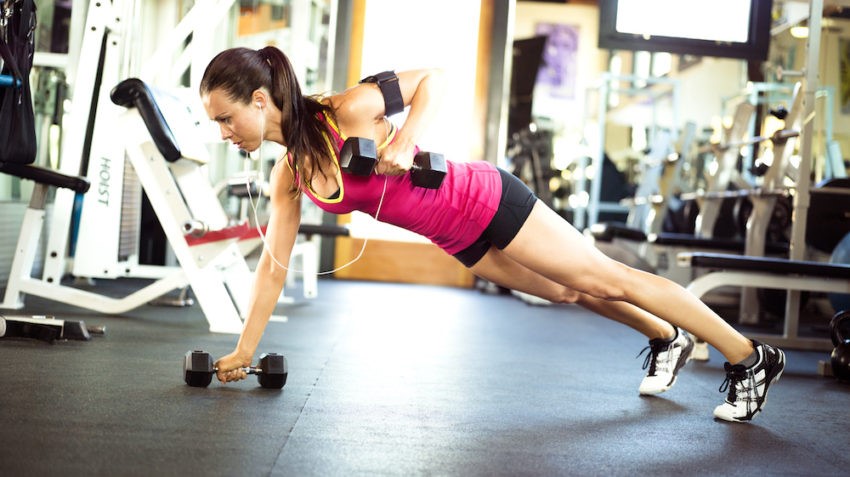
This is perhaps the busiest time of the year for people joining the gym and for those of us that are already regular users of the gym it is the busiest time in the gym with new people working out! All too often though our motivation to workout gets disrupted, it breaks the routine or something else affects our ability to attend as often as we would like, an injury for example. This is not just about using a gym, it is about keeping our bodies active and making sure that we stay healthy. There are any number of activities from doing some simple stretches at home with some light exercises, press-ups for example, to pilates, yoga, meditation, the list is endless.
Don’t let an injury stop you in your tracks. Get osteopathic treatment and professional advice. If this is the new you then don’t let anything get in your way.

By focusing the mind we can achieve anything. A bit deep you might say but everyone’s level of success is relative. The key is not to see failure before giving something a try. Something that is at first glance impossible may very well be possible with dedication and resilience. By the way, this is not about climbing Mount Everest!
For some people it is shortage of time that is the ‘impossible’ factor. For mental well being we need time with loved ones, time spent with friends and family plus perhaps time spent with friends who are having difficulties, maybe health issues, and need our support.
If you were offered the opportunity to spend an hour with your favourite human ever do you think you could find the time? A mental reset helps us understand what is important to keeping us well and happy.
Gyms are not for everyone regardless of your physical capabilities. However having some you time is vitally important. Physical reset can mean many things. It could mean rest to give an injury an improved recovery rate. It could mean getting Osteopathic help for an issue that is not improving and is now starting to become troublesome.
Again, have a look at your life and factor in what small physical changes would improve your life. Give yourself one small goal to achieve and then build on that slowly. Listen to your body and decide what would improve the overall quality of your life. Life is for Living so don’t let injuries grumble on, don’t let lack of time mean you miss out on things that improve both mental and physical wellness.

Please do not hesitate to get in touch with us for any reason, we are here to help and welcome any feedback. Click here for more information.

I would like to take this opportunity to wish you all a very Merry Christmas and a truly Happy New Year. I would also like to extend a warm thanks for your continued support and look forward to seeing you all in the New Year. Kind regards,

Christmas Week – Opening Hours
Saturday 22nd December – 8.00am – 5.00pm
Sunday 23rd December – CLOSED
Monday 24th December – 8.00am – 5.00pm
Tuesday 25th December – CLOSED
Wednesday 26th December – CLOSED
hursday 27th December – 8.00am – 7.30pm
Friday 28th December – 8.00am – 7.30pm
New Years Week – Opening Hours
Saturday 29th December – 8.00am – 5.00pm
Sunday 30th December – CLOSED
Monday 31st December – 8.00am – 5.00pm
Tuesday 1st January – CLOSED
Wednesday 2nd January – 8.00am – 8.30pm
Thursday 3rd January – 8.00am – 8.30pm
Friday 4th January – 8.00am – 8.30pm
It is with great pleasure that I can announce Osteopath Mark and his lovely wife Gemma have recently given birth to their first child, a little boy called Noah, mother and baby are doing fine. What a wonderful Christmas present for them both and their families. Congratulations!
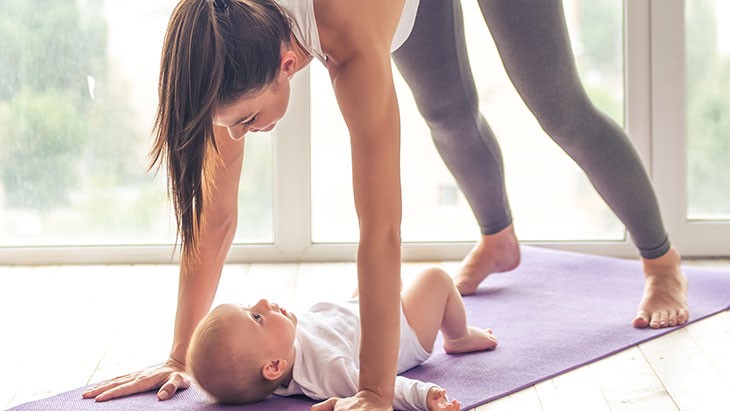
Having a baby brings a multitude of challenges and of course a lot of joy. For new Mums it is vitally important to be able to find some time to continue with treatment for a known condition or to restore balance to their body post-natal. It is a very common occurrence to have some form of back pain or back related issues during pregnancy due to changes that occur such as the softening of ligaments, weight increase and changes to posture.
At times back pain can begin during pregnancy and continue to be a problem after delivery. If not treated the pain can go on for long periods. Let us also not forget that the repetitive carrying and lifting of both baby and related equipment can not only cause problems but also hinder any kind of recovery. Osteopathy is an excellent aid to this recovery and a great way of starting the process of getting back to a new normal.
Cranial osteopathy is a refined and subtle type of osteopathic treatment, the techniques are safe, gentle and non-manipulative. They are often used when treating adults sensitive to manipulation, young children and babies. It encourages the release of stresses and tensions in the head and throughout the body.

Babies, even only a few days old, can have Cranial Osteopathy using a wide range of safe techniques from very gentle stretching and massage, to Cranial Osteopathy. These techniques are all very gentle as babies are ‘softer’ than adults and they can create deep relaxation, calming and increase wellbeing in babies and children.


Please do not hesitate to get in touch with us for any reason, we are here to help and welcome any feedback. Click here for more information.
Does Mental Stress Cause Back Pain?
In this month’s newsletter we delve into anxiety, the stresses that result from this and how to help prevent any long-lasting musculoskeletal-skeletal implications.
Quite often when experiencing an acute episode of pain we can be heard saying “this could not happen at a worse time in my life, I’m so busy with work/ill parents/school etc”. Well, perhaps we should consider that this is precisely the reason why this musculoskeletal-skeletal condition has arisen. Our bodies have got an extremely clever mechanism or safety valve that at times force us to stop, rest and recuperate before continuing willy-nilly and risk doing permanent damage.
The answer is straight forward though, yes, mental stress can be attributed to causing back pain but that does not make the pain any less valid or real.
Kind regards,


Pain is extremely disruptive, with back pain easily one of the most common types of pains to experience. If you are prone to anxiety, then it’s possible that you have been suffering with regular back pain for years as a result of it.
Back pain from anxiety is common, and while it is certainly not the main cause of back pain, it is a reason that some people end up getting help for their anxiety. So what causes back pain, and what can be done about it?
Being anxious activates the body’s stress response. A part of the stress response includes causing the body’s muscles to tighten so that they are more resilient to damage when in real danger. The greater the degree of stress response, the more effect it has, including causing the body’s muscles to become extremely tight, even to the point of pain.
In fact, high anxiety and persistently elevated stress can cause muscles to become so tight that they experience chronic pain, stiffness, soreness and immobility. So, as your anxious behaviours increase, so will your body’s stress and its effects, including causing severely tight muscles in the back that cause chronic back pain.

Anxiety can cause people to change their behaviours and posture, including the way they sit, what they do when they sit, whether they slouch, and so on. Changes in posture, especially when combined with the muscle tension from anxiety, can cause the muscles to be in uncomfortable positions and ultimately lead to back pain.

Anxiety may also change people’s physical activity levels. Activity plays a direct role in back pain, and healthy physical activity tends to make the back more mobile and less receptive to general aches and pains. If someone reduces their activity levels because of anxiety, it is possible that this will lead to back pain.
Another issue related to anxiety is hypersensitivity. Those with anxiety tend to experience physical sensations more than those without anxiety. As such, mild back pain, the type of back pain that normally would not change your activity levels, could feel more severe and be harder to ignore, which in turn would lead to adjustments that may contribute to further back pain.

We spend hundreds if not more each year on making sure our cars are working as expected and servicing boilers, washing machines and the like. The irony is that these are factors that can also cause us stress and potentially make us anxious.
Our bodies need this same care and attention to function properly so visiting an Osteopath on a regular basis with perhaps no pain is good practice. It can at times highlight areas that are becoming tense allowing simple defensive treatment or a gentle massage to relieve the tightness in the area. This approach is a very useful exercise in keeping your body free from injury, free from tightness, free from restriction in movement thereby promoting a lifestyle of good activity, pain free posture and general well-being.

As we have mentioned in previous newsletters, treatment for back pain can range from dealing with acute or chronic conditions resulting in more extensive investigations and lengthy treatment programmes but when we look to the type of scenarios that can be caused by stress or anxiety a more balanced approach can be extremely effective.
It’s OK to book an appointment when you have no pain. We as Osteopaths see things that may not be that obvious on the surface allowing us to treat and prevent a condition from becoming acute.

Please do not hesitate to get in touch with us for any reason, we are here to help and welcome any feedback. Click here for more information.
For the vast majority of us September is back to work or back to the school run. Whilst this may be seen as back to the grind, research shows that having a structured routine has health benefits. We explore some of these health benefits below.
Kind regards,

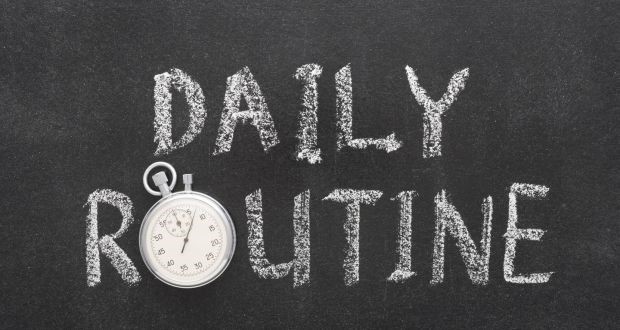
People are creatures of habit, and routines offer a way to promote health and wellness through structure and organization. Having a routine can greatly improve your health. Routines can be fun and don’t need to be boring. The potential health benefits will make you wonder why you didn’t start one earlier.
Many people who don’t have any type of routine suffer from:
Ineffective Use of Time – often no routine means you simply run out of time, leaving things undone and not making the most of your time.
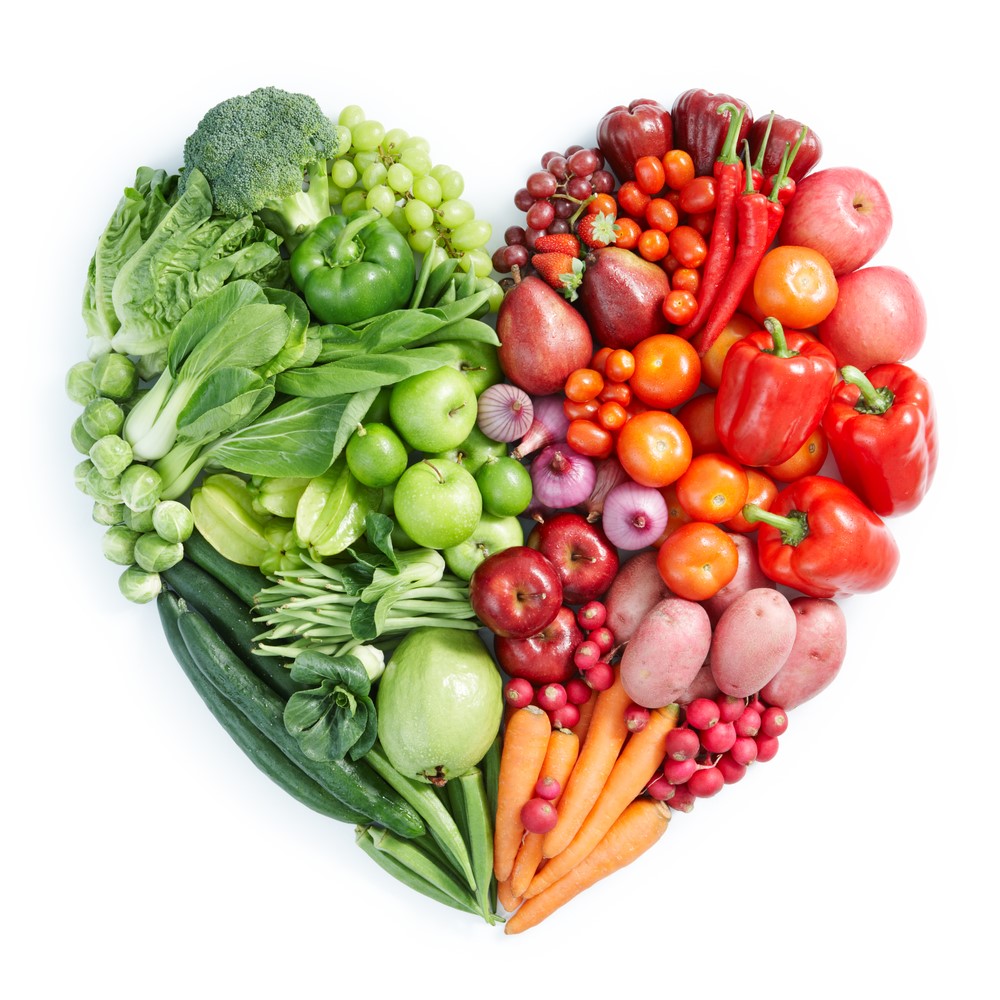
So, your routine can enhance your body’s Circadian Rhythm. In the same way as a steady routine can improve your lifestyle, regular Osteopathy can decrease the tensions that build up with life’s stressors. If you have a history of musculoskeletal pain, then routine management of this can help prevent recurrence or minimise the acute flare ups that can occur.
We advise approaching Autumn with a plan to create a routine that enhances your lifestyle. Build in time for:
Emotional Well-Being – This involves the social side of our personalities, so plan events with friends/family to ensure you have time for vital emotional welfare.
Physical Well-Being – This involves exercising, be it walking in Bushy Park or training for an event. However, the importance of routine means that it should be little and often which needs planning. You can also plan your Osteopathic treatments to maintain and enhance the physical self.

Please do not hesitate to get in touch with us for any reason, we are here to help and welcome any feedback. Click here for more information.
As Brits return from their summer holidays, a recent survey has found that almost half (48%) of the nation’s holidaymakers will experience back or neck pain whilst on their trip.
According to the survey, respondents stated that sleeping in a bed with an unfamiliar mattress (23%) or pillow (18%) were the biggest causes of back or neck pain while away from home.
A fifth (18%) of Brits have pointed to travelling as a trigger for their back or neck pain. 15% of jet-setters experienced pain following long haul flights, whilst driving (10%) and long coach/train journeys (11%) were also common triggers.
With many of us preparing to get away over the August holiday season here are some top tips for reducing holiday related back pain:
Kind regards,

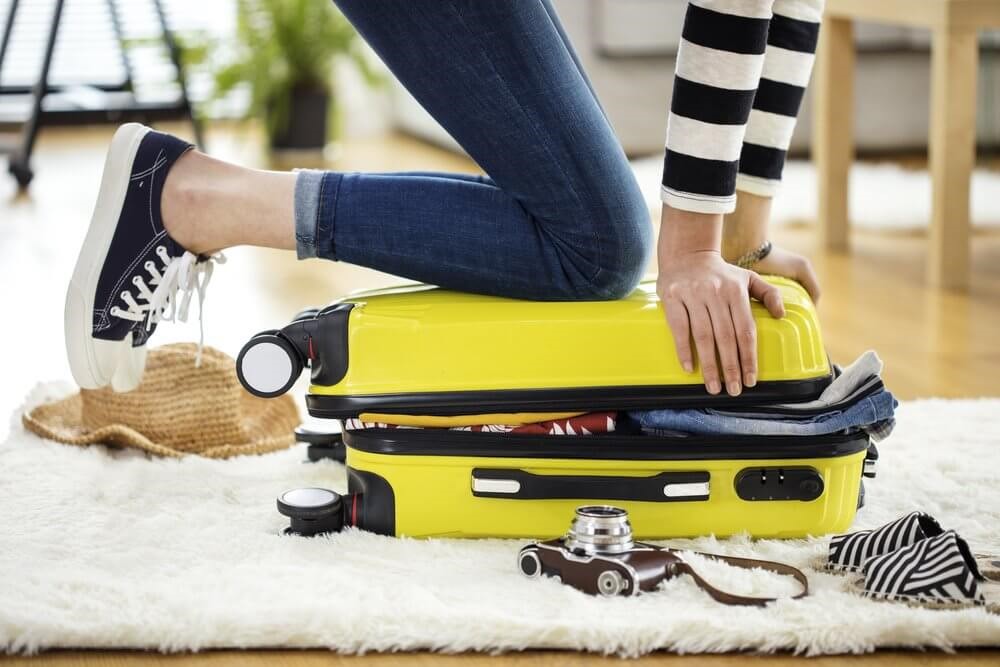
More than one in ten (12%) of people pointed to their luggage as a cause of back or neck pain, but this doesn’t have to be the case! Look for the lightest bag possible on wheels as most hard cases can weigh a lot, even with nothing in them.
If there’s two of you, taking your own individual, smaller suitcases can help reduce the weight carried by one passenger. Be careful when loading your cases in and out of the car or overhead locker on the plane and also on the airport baggage carousel. Where possible, pushing your suitcase instead of pulling can also help to prevent your back from twisting and the newer style of suitcase on four wheels can help to reduce the load on your back as well.

On the plane, remember to get up from your seat and walk around at least every 2 hours. Simple exercises like shoulder shrugs, buttock clenches and foot circles can all help to keep your body active in flight too.
Even the best quality hotel beds may not be the right fit for your back. If the bed is too hard when you arrive, try asking reception for an additional duvet or blanket to put between you and the mattress to help soften it.
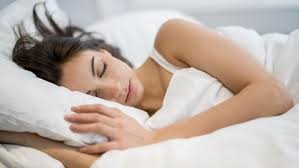
Don’t be afraid to ask the hotel to swap your pillows too if you’re not happy. They should allow your head and neck to rest comfortably whilst feeling supported.
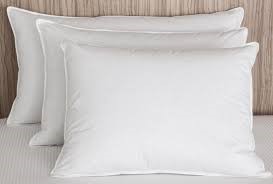
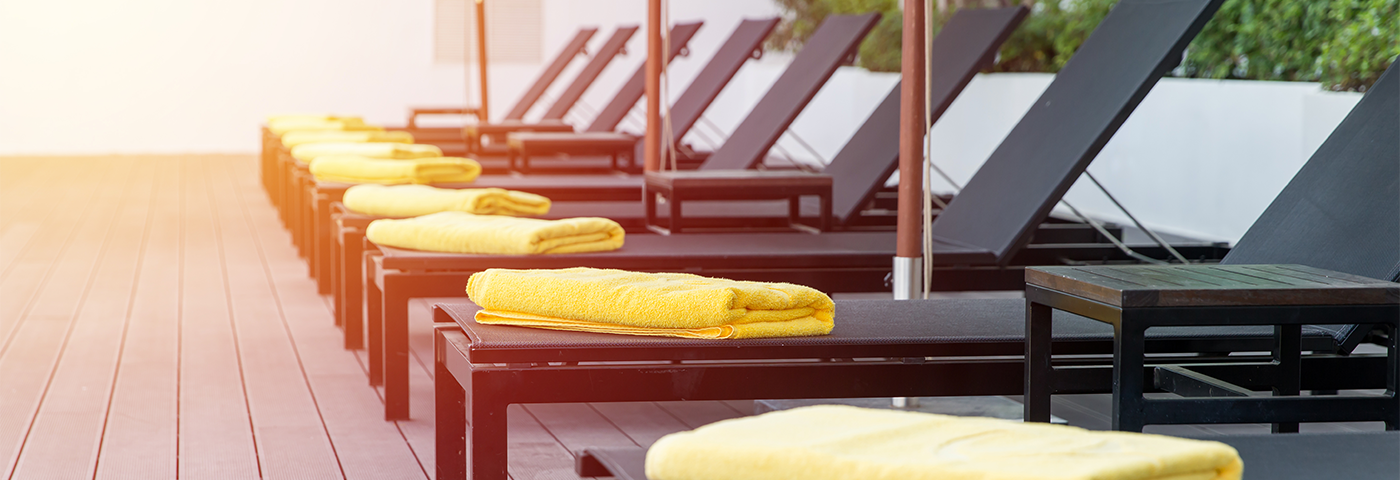
It’s tempting to spend your whole trip lying on a sun lounger, however one in ten people pointed to long periods of inactivity as a key trigger of their pain. Staying active is important for preventing back or neck pain and holidays are a great time to try new activities like swimming or why not take a walk around the area?
When you are relaxing by the pool though, try putting your book on the floor and reading over the edge of your sun bed, rather than arching upwards.

ost of us will try a sport that we don’t practice on a regular basis which can be a shock to our muscles. Trying some simple exercises which ‘warm up’ any unused muscles before going away can help reduce the chance of injury. Try balancing exercises, squats, sit ups and cycling before any activity.

Hot weather or traipsing around the city means your body requires more water than usual and dehydration can exacerbate back or neck pain. Remember to drink lots of water, especially if you’re enjoying a drink or two in the evening.

Please do not hesitate to get in touch with us for any reason, we are here to help and welcome any feedback. Click here for more information.